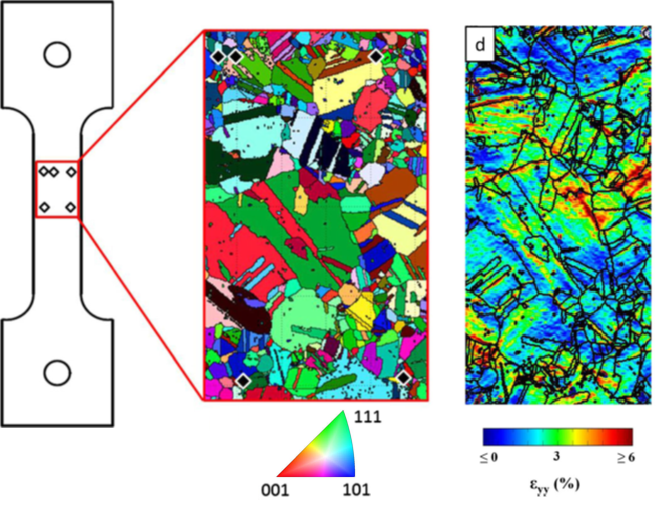USU's Mechanics at Extreme Temperatures Lab is looking for at least three (3) Undergraduate Research Assistants for Summer or Fall 2020.
General Qualifications
- Open to undergraduate students from any year or major at USU, but those with an interest in engineering or physical sciences are preferred.
- Ability to work independently or in teams as needed.
- Must have good writing skills. All students are expected to produce scientific literature. Students with an interest in graduate school are especially encouraged.
- Underrepresented groups in STEM (i.e. veterans, women and gender non-conforming individuals, LGBTQ+ students, racial/ethnic minorities, etc.) are encouraged to apply.
Specific Projects
1. Camera-based Deformation Measurements
Our lab uses camera-based techniques to measure deformation and failure. However, when applied to extreme testing conditions, additional improvements must be made to overcome experimental challenges:
Our lab uses camera-based techniques to measure deformation and failure. However, when applied to extreme testing conditions, additional improvements must be made to overcome experimental challenges:
|
1.a. High Speeds: Tradeoffs in Lighting
In vibration-based testing, it is difficult to ensure bright enough images to record meaningful displacements. As a plate vibrates out-of-plane, it is susceptible both to motion blur (which demands short exposure times on the camera) and poor depth of field (which demands small apertures on the lens). One can also improve brightness by increasing the gain on the camera amplifier, but this is generally not recommended because it amplifies noise along with the intended signal. In this research, you will answer the question: is gain ever the least-worst option? |
Cameras and lights mounted over a shaker at AFRL's Turbine Engine Fatigue Facility
|
|
1.b. High Temperatures: Speckle Pattern Inversion
At extreme temperatures (for example, during hot-fire rocket testing) materials glow white hot, and the emitted light interferes with camera-based measurements. Depending on the emissivity of the material, the test article may glow brighter than the applied tracking pattern to detect deformation, resulting in an inverted image. The emitted light is known to be brighter at longer wavelengths (red) than at shorter wavelengths (green or blue). In this research, you investigate whether the pattern inversion can be mitigated by comparing the red, green, and blue signals from a color camera |
Sequence of images showing pattern inversion in hot-fire testing
( Paul Gradl, NASA-MSFC ) |
|
1.c. High Magnifications: Measuring Grain Orientations with Polarized Light
It is often helpful to map deformation against the unique microstructure of individual test specimens. To this end, one useful microscopy technique is Electron Backscatter Diffraction (EBSD), in which an electron beam is bounced off the surface of a specimen, which a detector then measures to determine crystal orientations within the specimen. USU's Scanning Electron Microscope includes a sensor for EBSD, but its test chamber is prohibitively small for some of the experiments we perform in our lab. In this research, you will develop an alternative to EBSD which uses polarized light to detect crystal orientations at a scale friendlier to our lab's test specimens. |
(left) Test sample indicating a region of interest; (center) EBSD measurement of that region; (right) camera-based strain measurement of that region
( Garrett Pataky, Clemson Univ. ) |
To Apply
Please send a resume and a brief statement of your research and career interests to [email protected].
If hired, you will also be asked to formally apply on Aggie Handshake to job #900293: Undergraduate Researcher (Experimental Solid Mechanics).
If hired, you will also be asked to formally apply on Aggie Handshake to job #900293: Undergraduate Researcher (Experimental Solid Mechanics).




